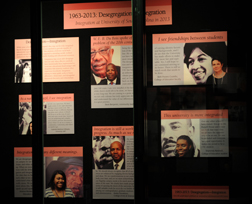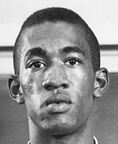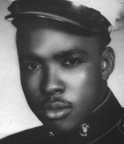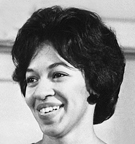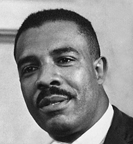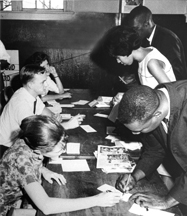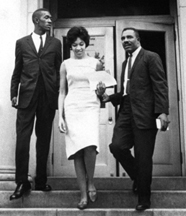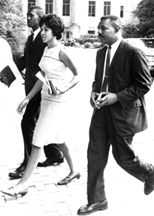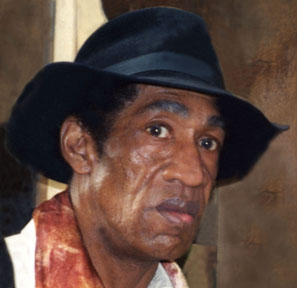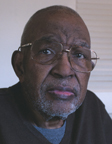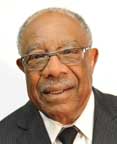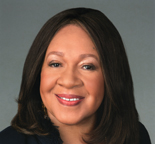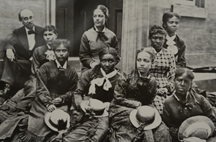

University of South Carolina |
|||||||||||||||||||||
The University of South Carolina was desegregated in 1873 (with its re-segregation occurring between 1877-1880) and in September 1963 with the enrollment of Robert G. Anderson, Jr., James L. Solomon, Jr., and Henrie Dobbins Monteith (Treadwell) at the Columbia campus and James H. Hollins at the Beaufort campus. The Museum of Education commemorates these events with on-site and web exhibitions that portray the racial climate of the community in 1963, examine differences between school desegregation and integration, and offer advice to preservice teachers who are planning to enter the classrooms of South Carolina and join the struggle for social justice and civil rights. |
|||||||||||||||||||||
The 20th century desegregation of USC was initiated with an October 31, 1962 federal court suit requesting admission to the University for Henrie Dobbins Monteith of Columbia after her May 1962 application to the university was denied. University administrators openly acknowledged that she had been rejected due to her race. In July 1963, months after Harvey Gantt’s enrollment at Clemson University, U. S. District Court Judge J. Robert Martin, Jr. ordered USC to begin admitting students, regardless of race, in the fall of 1963. During the time that Monteith’s lawsuit proceeded through the courts, two other students, Robert G. Anderson, Jr., of Greenville and James L. Solomon, Jr., of Sumter, applied to the University for admission. On September 11, 1963, Monteith, Anderson, and Solomon met at the office of their lawyer, Matthew J. Perry, and were driven to the University’s Administration Building in Columbia to register. One day later, September 12, 1963 as designated by USC administrators in Columbia, James H. Hollins, a Marine staff sergeant stationed at Parris Island, enrolled for courses at the USC Extension Campus in Beaufort. |
|
||||||||||||||||||||
Desegregation in 1873 |
|||||||||||||||||||||
Four students who helped to desegregate |
|||||||||||||||||||||
|
|
|||||||||||||||||||||
1963-2013: Desegregation—Integration draws comments from community and university members and, through a collage format of quotations and images, presents reflections on the past and hopes for the future. Throughout the upcoming academic year, USC students are invited to compose and present Integration Creeds—statements that describe integrated educational settings and steps for building such communities—at the Museum’s gallery stage for inclusion in the web exhibition. It is our hope that this exhibition will create more interest in the educational and racial climate of schools in South Carolina and, equally importantly, will generate further discussion among students, faculty, staff, and administrators for the articulation of a definition and vision of a truly integrated educational community. |
|||||||||||||||||||||
|
|
|
|||||||||||||||||||
The Museum of Education expresses its appreciation to those individuals who participated in this exhibition.
See Participants

an institutional member of the International Coalition of Sites of Conscience
Museumofed@gmail.com


